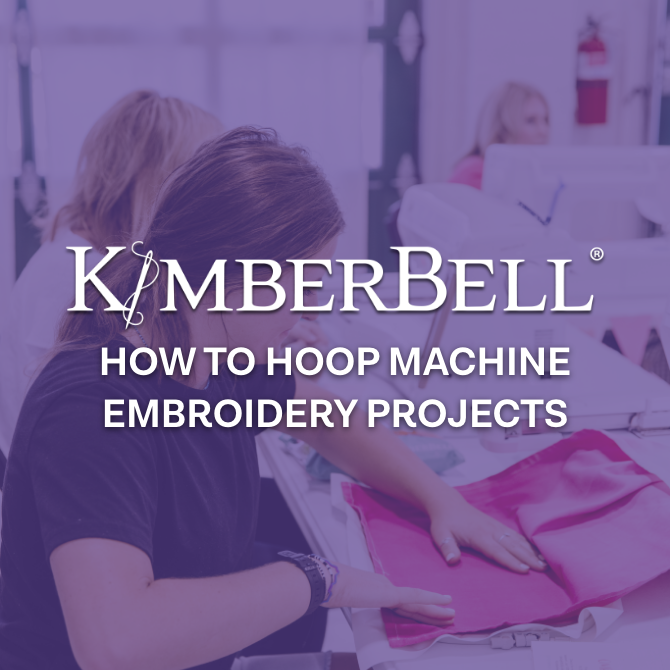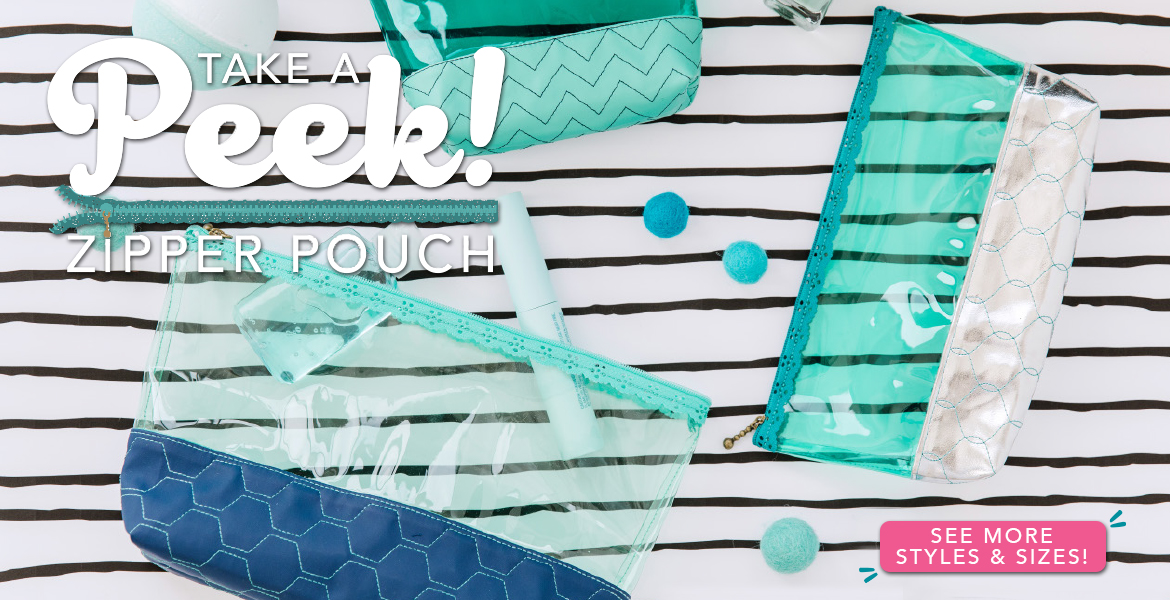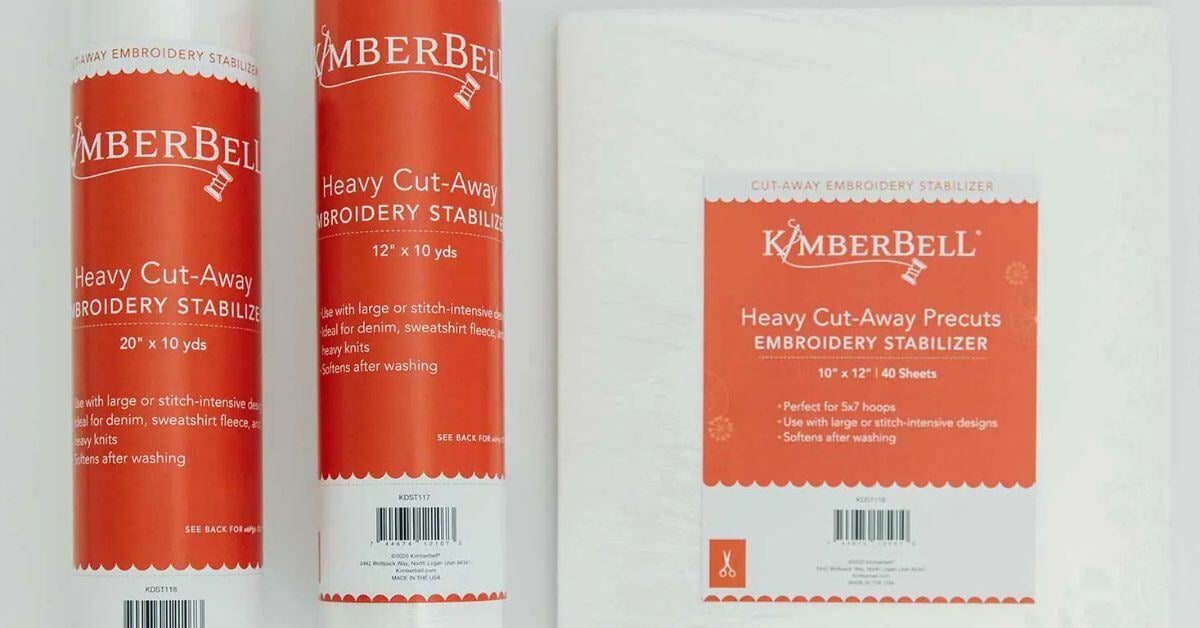How to Hoop Machine Embroidery Projects


Everyone knows that machine embroidery can't happen without hooping your project. But there's more to hooping than first meets the eye!
Here's what you need to know about hooping, including embroidery field sizes, the different types of hooping, and how to easily hoop your projects.
![]()
All Shapes and Sizes
Embroidery machine hoops come in all shapes and sizes. And, if you're new to machine embroidery, it may surprise you that the stated size of your hoop isn't exactly how it measures.
The size of your hoop is also not the same as its embroidery field, which is smaller. All of this can be confusing, so let's dive into it!

![]()
Embroidery Fields and Hoop Sizes
To accommodate the presser foot and needle, a hoop's embroidery field size is smaller than the physical hoop. There has to be a buffer around the edges or the presser foot and hoop would collide.

Example: If your 6x10 hoop has an embroidery field size of 5x7 x 9.45" and you want to stitch a design that's 5.52 x 8.54", the design will fit in your hoop!
![]()
How to Hoop

Here are some helpful tips for hooping various materials:
Hooping Stabilizer Only
If the stabilizer is woven, d o NOT pull on the edges of the stabilizer. If the stabilizer is not woven, it's okay to pull on the edges to make it taut.
Hooping Fabric With Stabilizer
- If the fabric is large enough to be sandwiched in the hoop frames, center with the stabilizer.
- If the fabric is smaller than the hoop, place the fabric in the exact center of the stabilizer and tape all edges with Kimberbell Paper Tape to firmly adhere the fabric to the stabilizer.
Note: If hooping an embroiderable blank, please see the Float Hooping section below!
Once fabric and/or stabilizer are in place, put the inner frame of the hoop in the center of the outer frame, aligning the hoop properly. Many hoops have marks (often triangles) that need to line up.


![]()
Hooping Basics
Here are some additional hooping basics and tips!
Handle the hooped item by the frame only, being careful to keep the item taut in the hoop. Always place the hoop on a flat surface when trimming! When adding fabric (or embellishment applique pieces), first place the hoop on a flat surface. Place the applique fabric, then u se Kimberbell Paper Tapealong the edges to hold it in place.

Paper tape should be pressed and rubbed firmly to adhere the edges to the stabilizer and prevent the presser foot from catching on the edges. Be certain that the embroidery arm of the machine does not touch anything in its range of motion. If the embroidery arm gets bumped while stitching, it can shift the entire design and may result in damage. - Always place the hoop on a flat, heat-resistant surface (such as a wool pressing mat) when pressing your project in-the-hoop. A mini iron is ideal, as is the Kimberbell Wool Mat for larger hoops.
When instructions specify “remove the hoop from the machine," detach the hoop from the machine so the next action is easier without the presser foot in the way. ( Do not remove project from the hoop!) If a design has shifted, turn the machine off and back on again to recalibrate the embroidery arm. (When turned off, most embroidery machines will bookmark your spot so you can resume.)
Tip: The front of the hoop refers to the area you see when the machine is embroidering. The back or underside of the hoop is opposite of the front of the hoop.
With Kimberbell projects, fabric or other items are sometimes placed on the back of the hoop. If this is the case, our instructions will always have the label "back of hoop" on the photo.
![]()
Float Hooping

Tip: If you're having puckering issues, you can also float a piece of Heavy Tear-Away under your hoop while you're stitching. (Just slide it right under!)
![]()
Centering Crosshairs
After stitching the crosshairs, you'll fold the item to be embroidered, then align the folds along the crosshairs. This ensures that the design is perfectly centered on your project.

Each Kimberbell project that uses the floating technique will include the centering crosshairs embroidery file, along with detailed instructions on how to fold, place, and center your item.
Pssst . . .you can download a free crosshairs embroidery file HERE at any time!
![]()
Well, that's all the "hoop-la" about hooping! (I never can resist a little pun.) 😀
For more helpful information about a variety of machine embroidery, quilting, and sewing topics, please click HERE and download the free Kimberbell Resource Guide! (And share this resource with others!)
The more you know about your hobby, the more you'll be able to Experience the Joy of Creativity® to the fullest.
Happy stitching!



